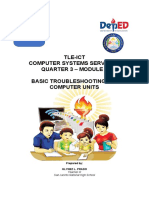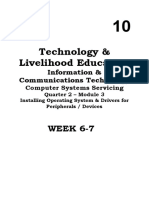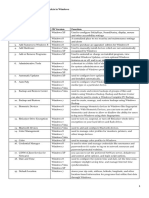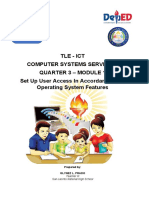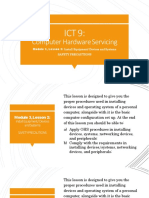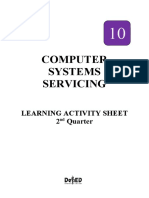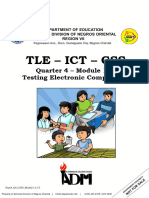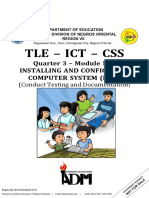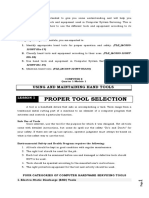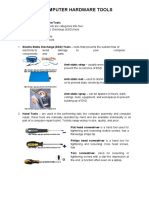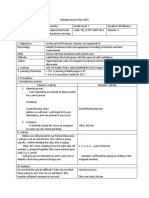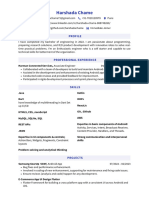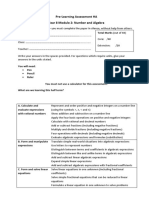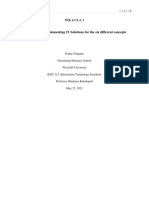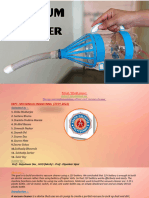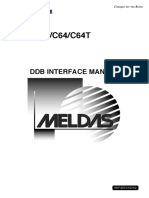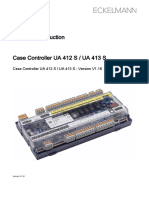100% found this document useful (1 vote)
799 views13 pagesQuarter 1 Module 2 3 G10 CSS
This document discusses different computer hardware tools categorized into four groups: ESD tools to prevent electrostatic discharge damage, hand tools for assembly and repair tasks, cleaning tools, and diagnostic tools. It provides examples of common tools in each category like anti-static mats, screwdrivers, tweezers, compressed air, and multimeters. Proper identification and use of the right computer hardware tools is important for safely performing installation, removal, and repair of computer components.
Uploaded by
melerio16Copyright
© © All Rights Reserved
We take content rights seriously. If you suspect this is your content, claim it here.
Available Formats
Download as PDF, TXT or read online on Scribd
100% found this document useful (1 vote)
799 views13 pagesQuarter 1 Module 2 3 G10 CSS
This document discusses different computer hardware tools categorized into four groups: ESD tools to prevent electrostatic discharge damage, hand tools for assembly and repair tasks, cleaning tools, and diagnostic tools. It provides examples of common tools in each category like anti-static mats, screwdrivers, tweezers, compressed air, and multimeters. Proper identification and use of the right computer hardware tools is important for safely performing installation, removal, and repair of computer components.
Uploaded by
melerio16Copyright
© © All Rights Reserved
We take content rights seriously. If you suspect this is your content, claim it here.
Available Formats
Download as PDF, TXT or read online on Scribd
/ 13


